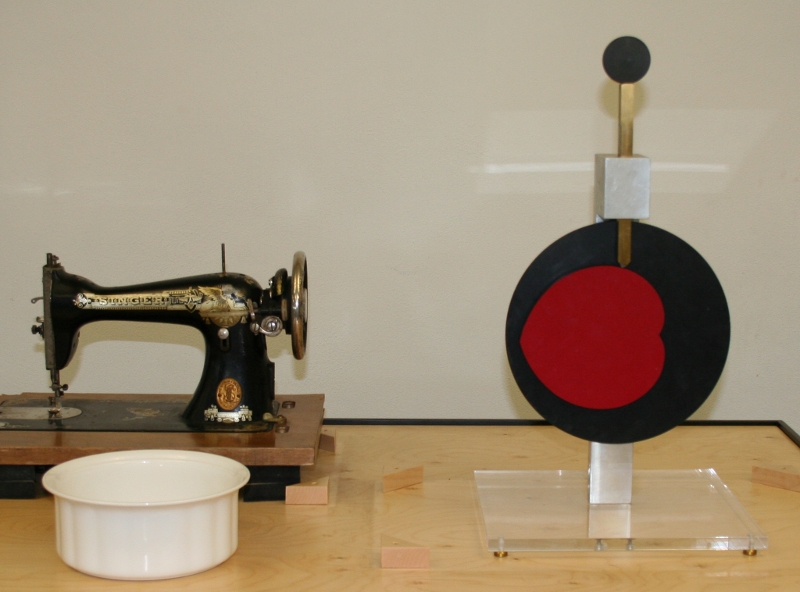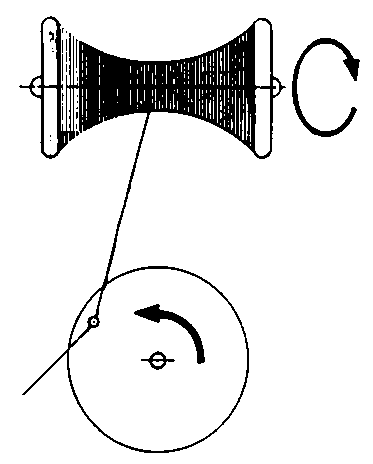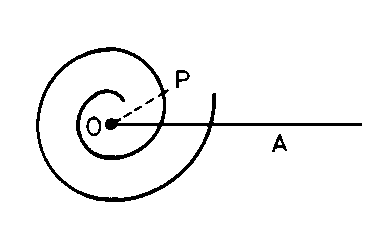
|
In technological applications it frequently occurs that the profile of a
certain curve is used to determine a mechanism's functions. This is so in the case
of all cam and tappet based systems, as for example, occurs with the sewing machine's
function of winding thread evenly around a spool.In order to perform
this task, there must be a guide moving at constant speed
(alternatively from right to left
and from left to right), to direct the thread.
|

|
The simplest imaginable mechanism, a "thread guide" moving
with a uniform circular motion and projecting this movement on
the axis of the spool (the position of the winding thread)
would move with a harmonic motion,
delivering a lot more thread to the extremities of the spool than in the middle.
This problem is solved by using
the spiral of
Archimedes.
|

|
This is a curve that has "P" points with the following properties:
their distance from a fixed point O increases in proportion to the angle
formed by the segment PO with a fixed half-line of reference, OA.
|

|
Using a cam formed by two "blocks" of the spiral of Archimedes
is easy to solve the problem of winding the thread evenly.
The exhibit reproduces the sewing machine mechanism that is
used to wind the thread evenly on a spool. By implementing a double
spiral of Archimedes,
one can transform a uniform rotating motion
into a uniform straight motion (at intervals).
|




